Italy’s Most Underrated Towns 2024: Stay in Lazio
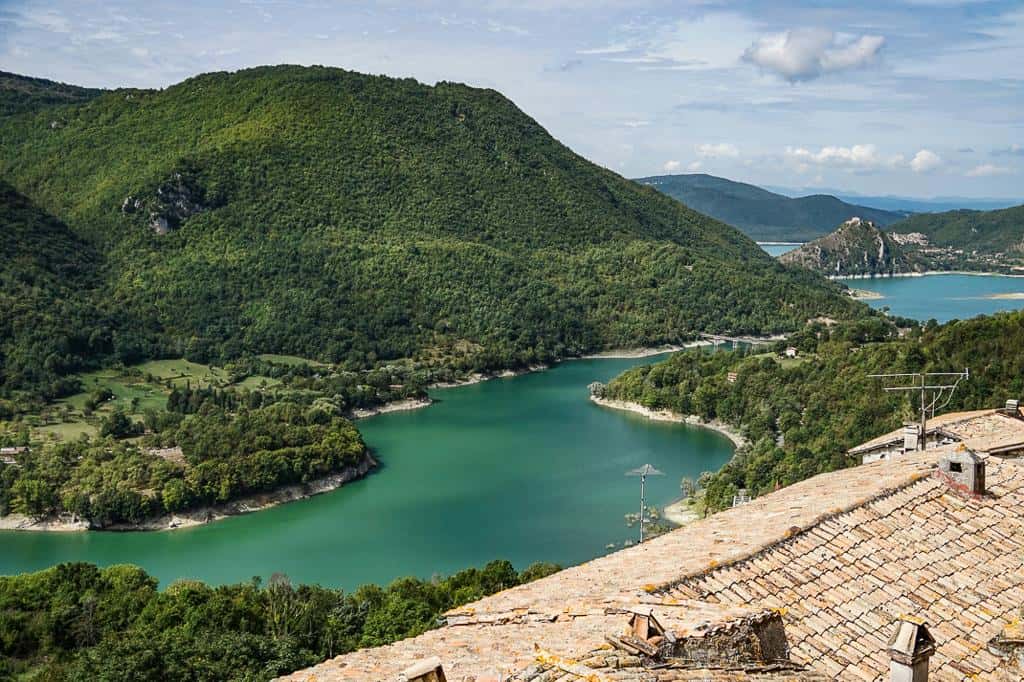
Rome gets about 10 million tourists a year. But how many of them ever get out of town for day trips? How many go into the countryside and spend the night in a small town in the Alban Hills and not Rome’s seven hills? If you’ve ever been to Rome, did you get out of Rome?
Lazio, Rome’s region, is sprinkled with fascinating, little-known destinations that are unspoiled and welcome visitors with open arms and big plates of local cuisine. Beach towns. Mountain villages. Ancient historical sites. They can all be found in less than a cheap 90-minute bus or train ride.

Every year around New Year’s I do a list of Italy’s most underrated towns for the coming year. Last January Marina and I launched our second website. Every other Friday, TraveLazio (www.travelazio.it) gives a brief synopsis of an interesting Lazio town. We list three things to do, a short feature on a quirky fact about the area, places to eat and how to get there. They’re quick glances to give Rome visitors, and expats living here, ideas when the heat or crowds of the capital make them a little batty.
This year’s Most Underrated list will be exclusively from Lazio. We visited 25 destinations. These are my top 10, all within 50 miles (80 kilometers) of Rome and in alphabetical order. All include handy links to longer descriptions with more photos from TraveLazio. (I did not include towns that were on past Underrated lists such as Nemi, Fregene and Anzio.) Keep these in mind next time you come to Rome and have bumped into one too many tour groups.
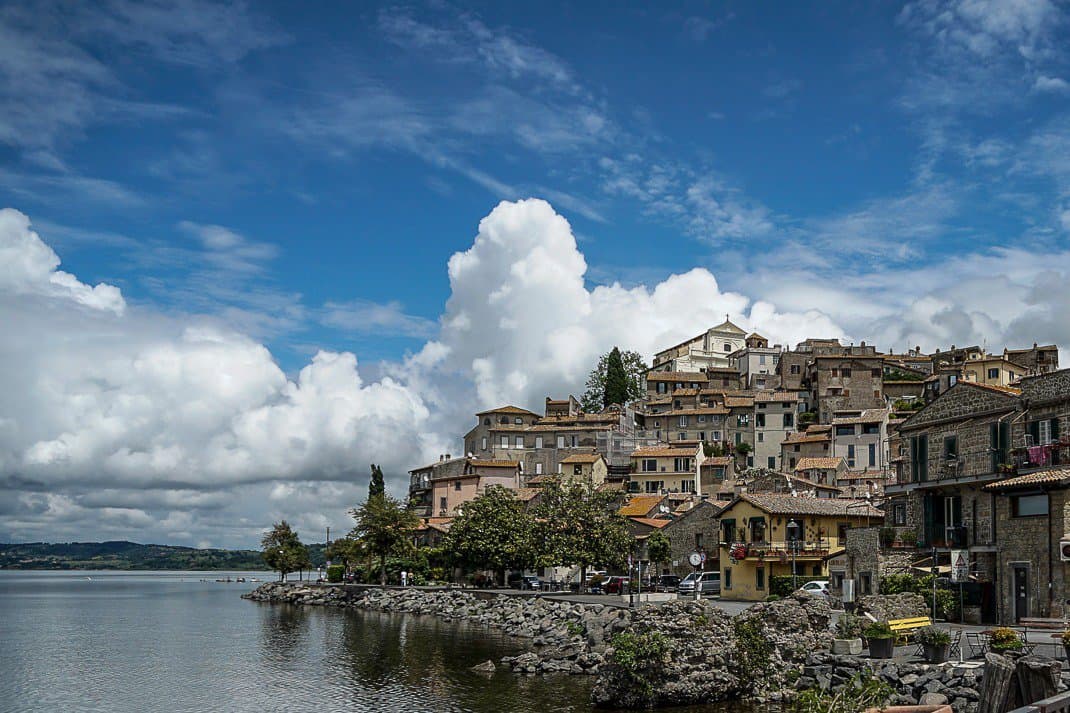
Anguillara Sabazia (19,000)
Southern Italy’s lakes are really underrated. Lago Bracciano doesn’t have the hype of Como and Garda in the north but it has the same relaxed vibe. Anguillara Sabazia is smaller than the town of Bracciano (see below) and no less charming. It has a beautiful boardwalk along the lake. Go up to the 16th century Chiesa della Madonna delle Grazie.
It has some Neoclassical paintings and an 18th century organ but just go for the view of the lake. Another great lake view is from I Giardini del Torrione, beautiful gardens with a 15th century tower atop the town. If you liked the American sitcom Everybody Loves Raymond, it filmed a couple episodes in Anguillara Sabazia.
Getting there: Trains leave Termini every 30 minutes. The 54-minute journey is €2.60 one way.
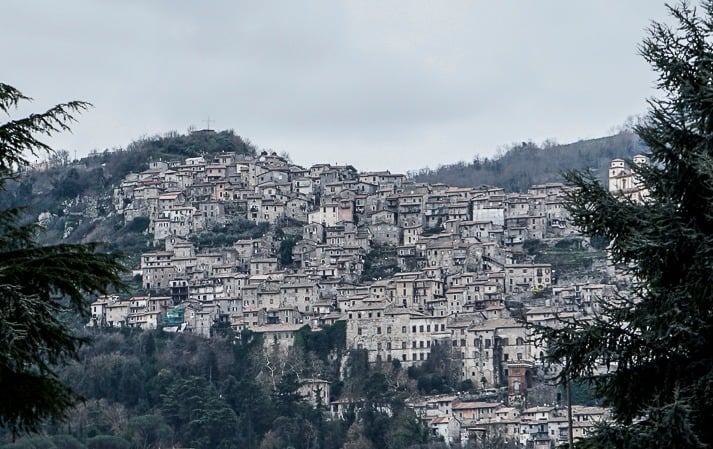
Artena (pop. 17,000)
This is one of the quirkiest little towns in Italy. Located high in the foothills of the Lepini Mountains south of Rome, Artena is famous for two things: rugby and mules. No, mules there don’t play rugby. The town has arguably the best rugby museum in the world, started by a local ex-rugby player who used his international connections to get paraphernalia from every top rugby nation in the world. The town also has kept a long-time tradition of using mules to haul garbage down the steep narrow roads. Walk the same roads and feel the vibe of a charming, small Italian town with few visitors.
Getting there: Trains leave every 30-60 minutes from Rome’s Termini station to Valmontone. The 45-minute trip is €3 one way. The three-mile taxi ride from Valmontone is €9-€12. If you’re visiting the Rugby Museum, call director Corrado Mattoccia at 39-348-374-1683 and he’ll pick you up.
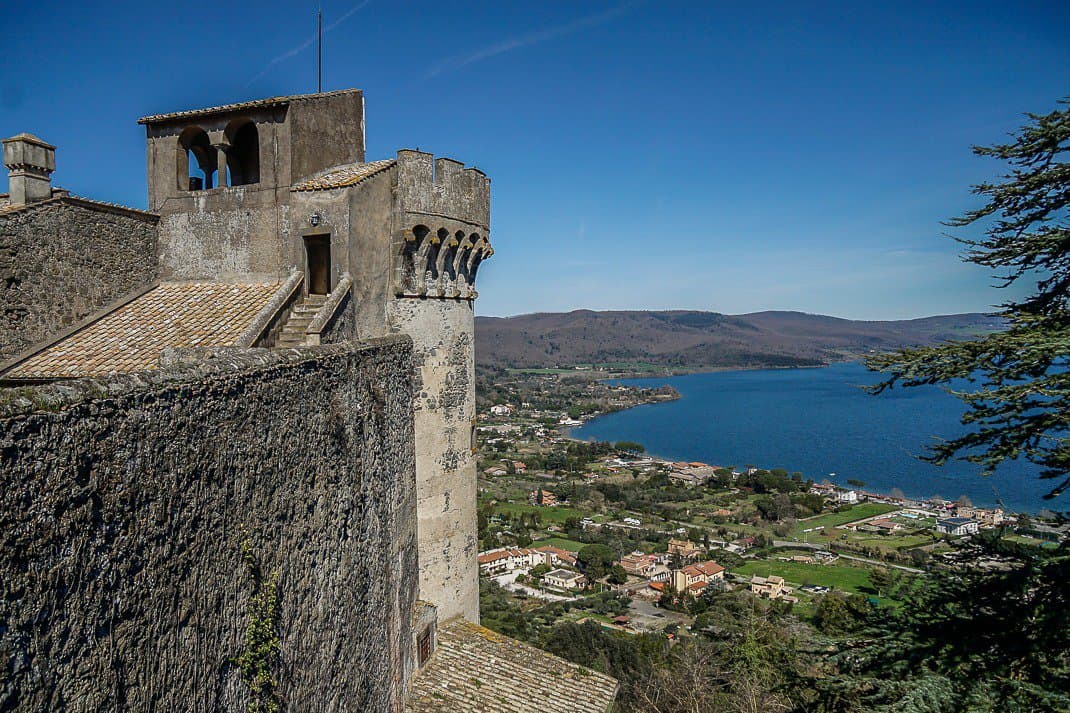
Bracciano (19,000)
The town of Bracciano is the best base for Lago Bracciano. Only 20 miles from Rome, it has the 15th century Castello Orsini-Odescalchi hovering over the lake. Inside the castle you pass the ancient kitchen, the armory and four-poster beds where the powerful Orsini family slept. Piazza IV Novembre is a great place to hang out under trees in the middle of the charming old town. Escape Rome’s heat in the summer and lay on the lake’s small beach. The lake supplies water to Rome and motorboats are not allowed.
Getting there: Trains leave every 30 minutes from Rome’s Termini. The 1-hour, 45-minute trip is €3.50.
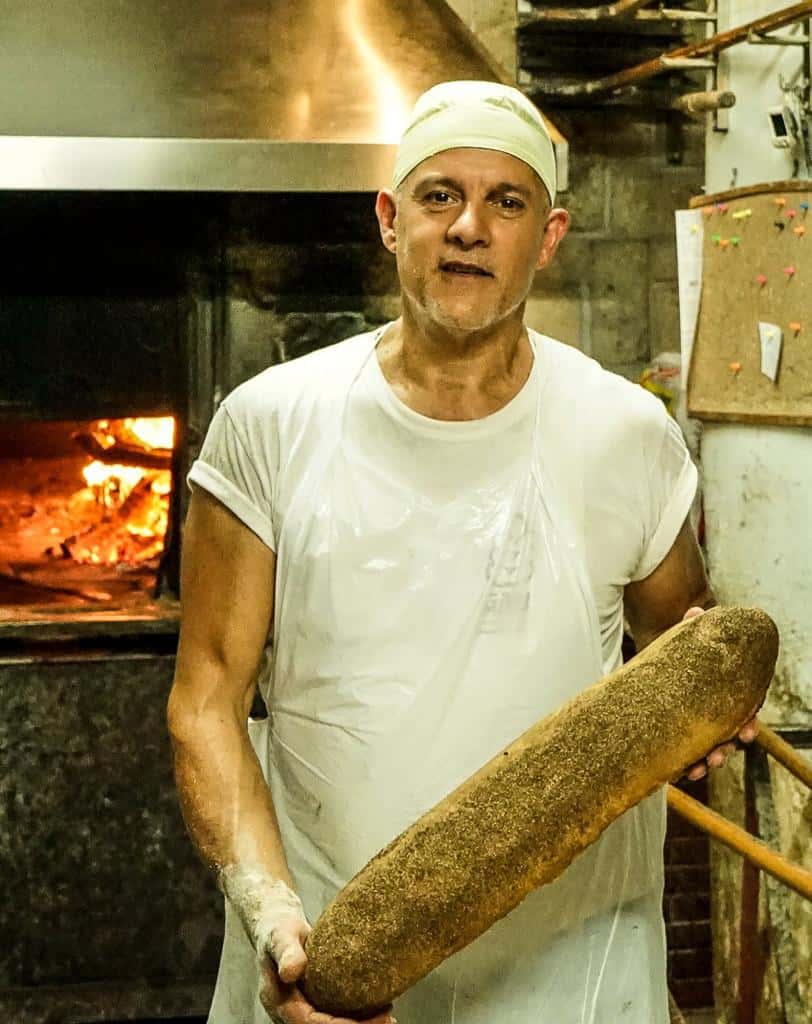
Genzano di Roma (24,000)
Like bread? You especially like Italian bread? Come 15 miles to Genzano di Roma. It has the best bread in Italy. The town supplies many of Rome’s restaurants with their special bread: hard crust with squishy insides, perfect for mopping up pasta sauce or eat plain with a glass of wine before dinner. Visit tiny bakeries such as Consorzio Tutela Pane and watch them bake and then buy a loaf for a picnic near Palazzo Sforza Cesarini with a great view of pretty Lago Nemi.
Go inside the palazzo for one of the rotating art exhibitions then go to the roof for the best lake view in town. Eat lunch outside at Trattoria dei Cacciatori where, as the word cacciatori indicates, has been a gathering place for hunters since 1885.
Getting there: Trains leave hourly from Termini. The 45-minute trip with a change at Albano Laziale is €2 one way.
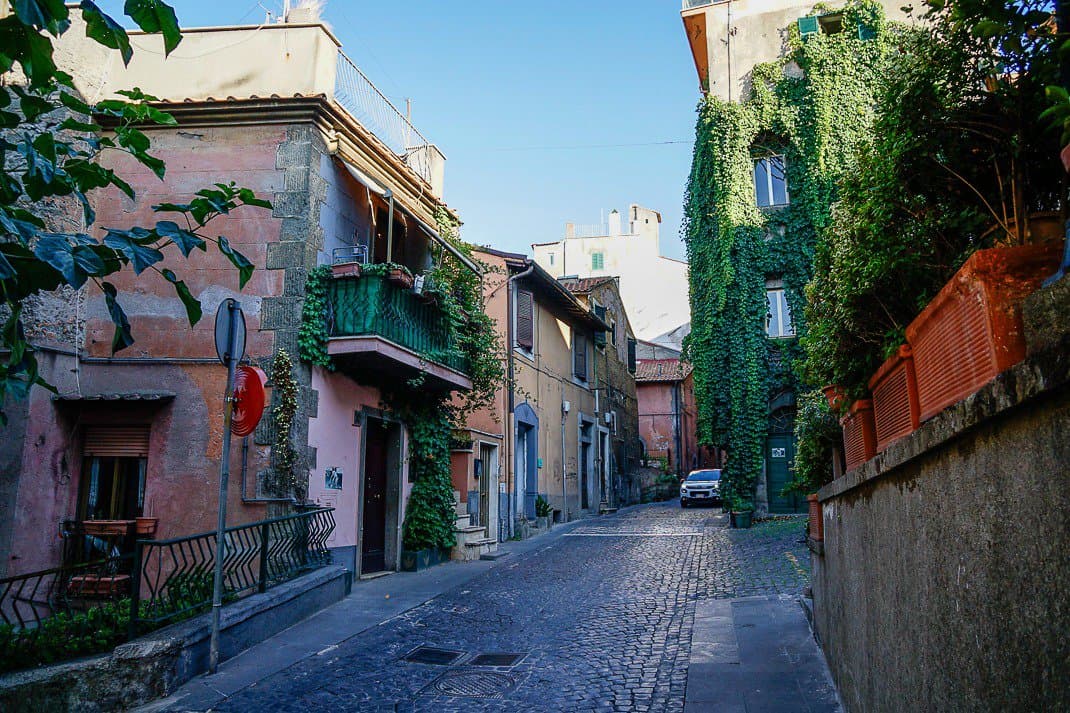
Marino (44,000)
Castelli Romani is a string of towns in the Alban Hills southeast of Rome and they all have their own draw. Marino has a white wine that is celebrated the first Sunday of every October with the Sagra dell’Uva di Marino. They hang bunches of grapes all over town and have the special wine pour out of the fountains in the old town.
Marino even has its own wine museum. It’s more than wine, though. The town features one of the best examples of Baroque architecture in Italy in its Basilica of San Barnaba. For local fare, try Ristorante Cacio e Pepe which specializes in the famous Roman dish, cacio e pepe.
Getting there: Trains leave regularly from Termini to Marino. The 35-minute trip is €2.

Ostia Antica (10,500)
When in Rome, no need to take a train two hours south to Pompeii. Take a train 23 minutes to Ostia Antica. Not to be confused with Ostia, Rome’s neighborhood on the Tyrrhenian Sea, neighboring Ostia Antica was once a thriving town all its own during Ancient Rome. In the 2nd century A.D., it had 50,000 people, a thriving, rich town of finance and culture.
You can stroll through 370 acres of well-preserved ruins which include an amphitheater which still holds performances, an ancient villa and temples. Just across the street you can also tour the 15th century Castello di Giulio II built as defense on the last part of the Tiber River before it flows into the sea. For fresh seafood, stop at Ristorante Monumento which has been serving Tyrrhenian fish since 1884.
Getting there: Trains leave Basilica San Paolo Station in the Ostiense neighborhood every 20 minutes. The 23-minute trip is about €2. Ostia Antica’s station is a short walk to the archaeological site.
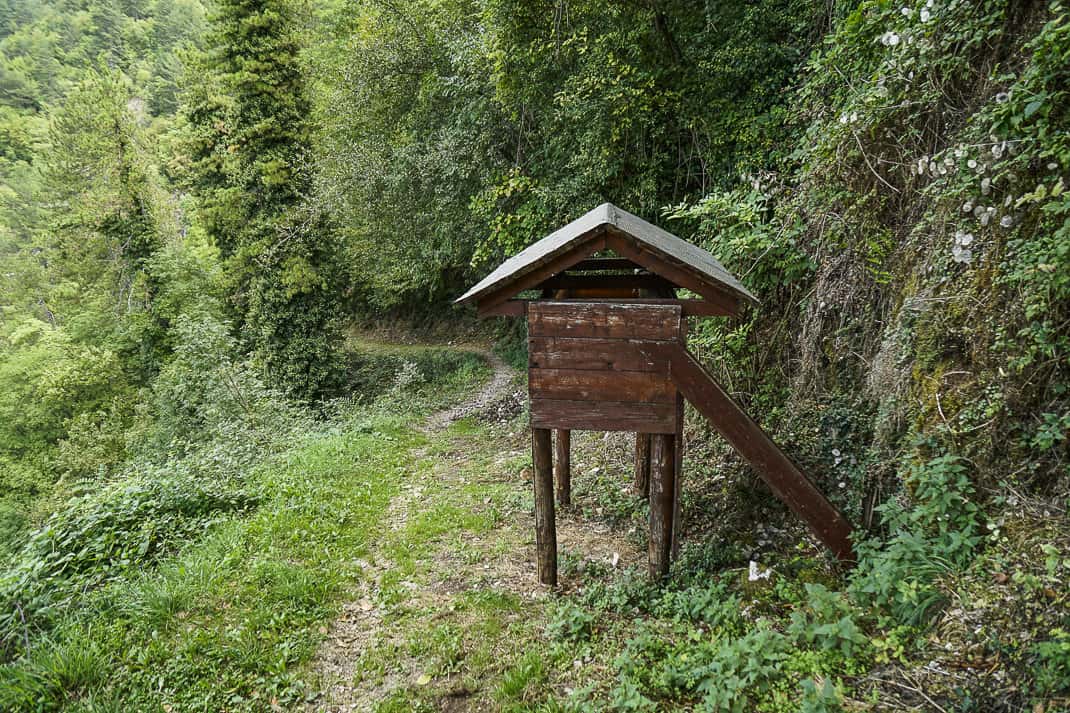
Paganico Sabino (148)
Bracciano isn’t the only beautiful lake in Lazio. Lago di Turano is an artificial lake built between 1936-39 about 50 miles northeast of Rome. The tiny village of Paganico Sabino may be small but it has a spectacular view of the lake below. Keep an eye out for eagles flying overhead.
The town is part of the nature reserve of Monte Cervia and Monte Navegna and is trying to increase its artistic and cultural traditions. Bring comfortable shoes and hike the Gole dell’Obito, which connects the town to other little principalities. You even cross a bridge from Ancient Rome. Check out the Museo della Civiltà Contadina, a museum dedicated to the area’s peasant traditions.
Getting there: Trains from Termini stop at Carsoli. The 90-minute trip is €5. Then take a Cotral bus to Paganico. The 23-minute bus trip is €2.
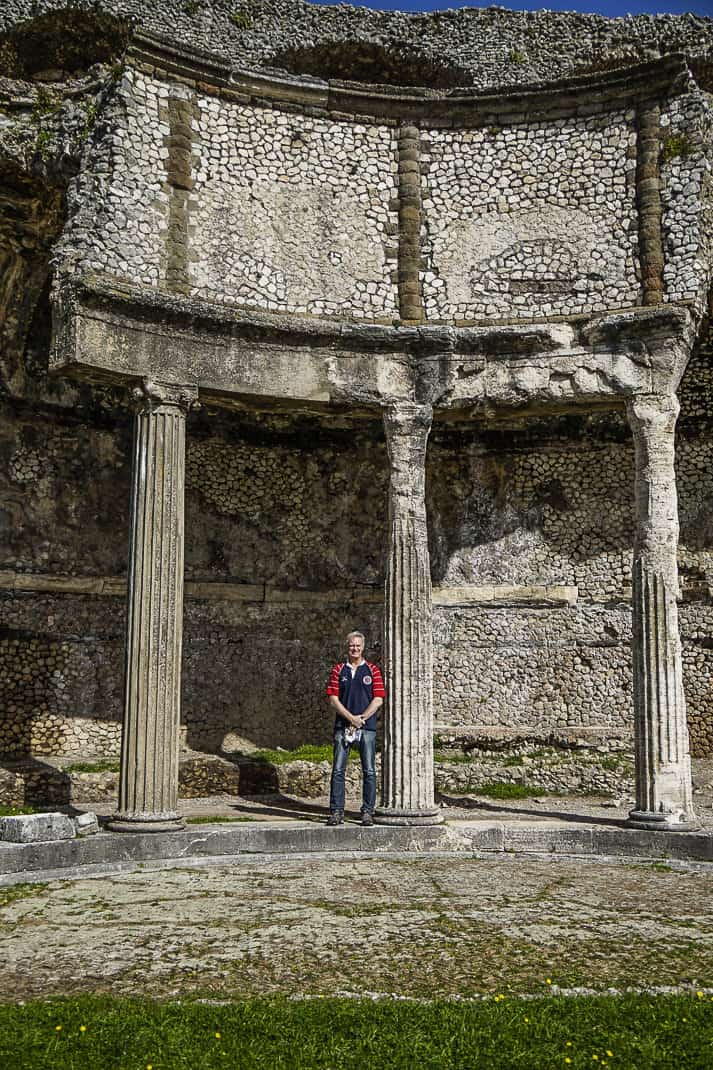
Palestrina (22,000)
This town 22 miles east of Rome was once a fierce, independent state that fought against the Roman Republic, the predecessor of the Roman Empire. The Republic eventually absorbed Palestrina in 338 B.C. but still remaining is the biggest sanctuary in Italy. When Palestrina wasn’t waging war it was a major site of pagan worship.
Today, the remains of huge temples hover over the modern town with a tremendous view of the Lazio countryside below. The site also has a national archaeological museum featuring marble busts of rich inhabitants, a calendar from 120 A.D. and a spectacular 20 x 13-foot mosaic of the Flooding of the Nile, depicting life in Egypt when it was part of Rome in the 1st century B.C. For an authentic Italian country meal, eat lunch at Casale Pepe, an agriturismo in a farmhouse at the bottom of the hill.
Getting there: Buses leave Termini every four hours. The hour-long trip changes at San Cesareo and is €4-5.
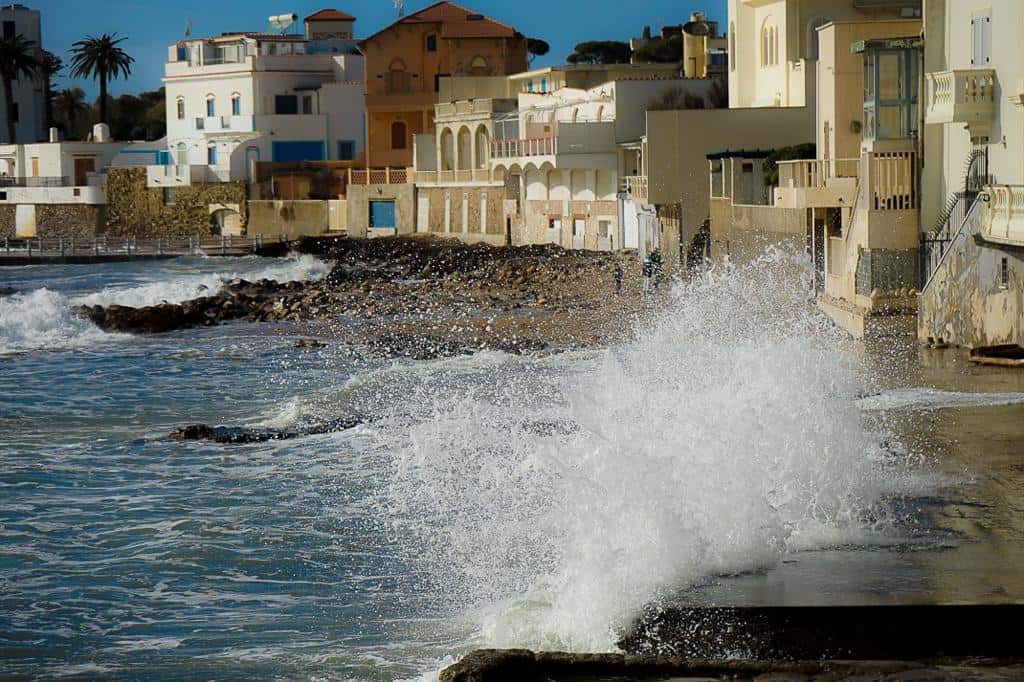
Santa Marinella (18,000)
The beauty of Lazio’s beaches is that many are so accessible from Rome. Hop a train at Termini and within an hour you’re at the beach. TraveLazio featured such a town in Nettuno Friday. Santa Marinella, north of Rome, is similar. The long, sandy beach is only a five-minute walk from the train station. Before hitting the beach, stroll to the town piazza ringed with cozy cafes to scout out a lunch spot then continue to the beautiful harbor for a coffee on the sea.
Tour Castello Odescalchi di Santa Marinella, built in the 12th century to protect against pirates and later incorporated into a coastal defense system in the 16th century. For lunch with a view, grab a table at Bianca Ristorante across the street from the beach.
Getting there: Trains leave Termini every 30 minutes and stop all along the Termini-Civitavecchia line. The hour-long trip is €5-11.
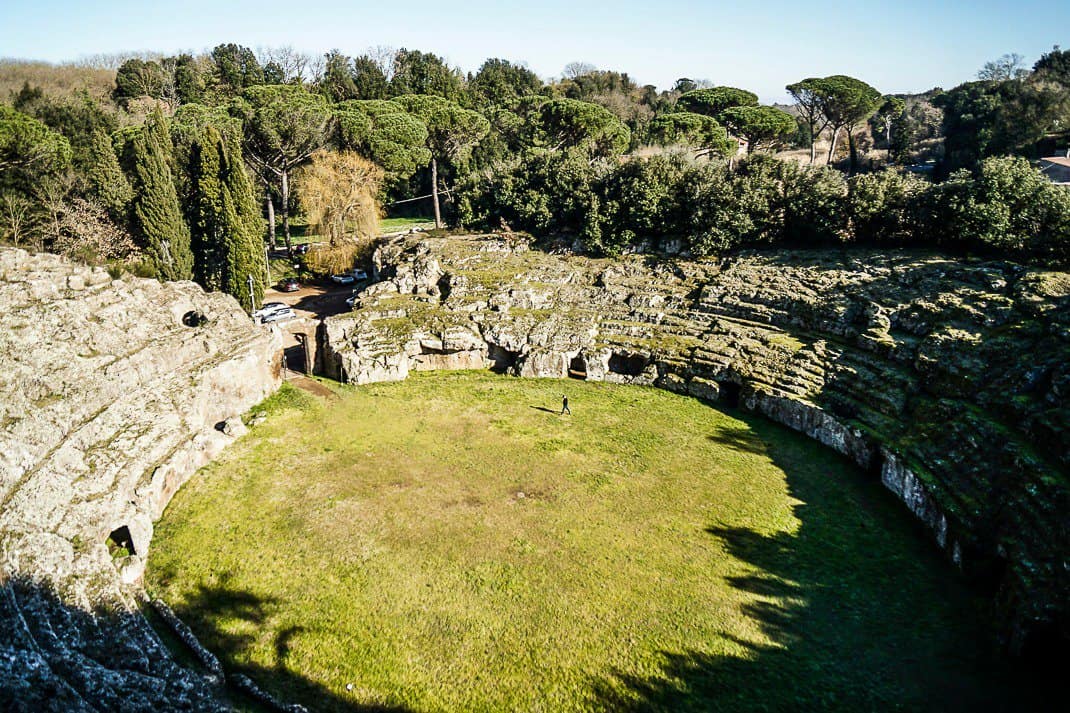
Sutri (7,000)
Rome doesn’t have the only colosseum in Italy. They’re scattered all over the Ancient Roman footprint. One of the closest is in Sutri, just 30 miles north of Rome. It’s smaller. It seated 9,000 instead of the 80,000 of the Roman Colosseum but it’s very well preserved and you can roam the stone stands and walk the grassy grounds where gladiators once died.
Sutri also has an eerie necropolis where you can see old tombs used from the 1st-4th century A.D. Running along the side of the necropolis is the famous Via Francigena, the ancient pilgrimage trail that stretches more than 1,000 miles from Canterbury, England, to Rome. You’ll see signs leading the way or just follow the backpackers who ply the trail every year. For a romantic place to stay, crash at Antico Borgo di Sutri, a four-star hotel just down the street from the town center and built on a 20-acre park.
Getting there: Buses leave Rome’s Piazzale Flaminio railway station every 30 minutes. The 1-hour, 50-minute trip has two changes and is €4-8. The closest train station is Capranica-Sutri, about two hours from Rome and a 10-minute taxi ride from Sutri. The train is €6-11 and the taxi €15-19.


January 16, 2024 @ 2:41 pm
We’ll be in Rome this Spring for about one month (if all goes according to plan). Will you be around? May I be in touch? Maybe we’ll get to visit some of these towns. Thank you John!
January 17, 2024 @ 2:21 pm
Just saw this comment. I replied to your previous comment: Yes, definitely look us up when you’re in Rome. We’ll be in Japan March 24-April 1. That’s the only trip we have planned this spring.
January 17, 2024 @ 3:08 pm
I hope to see all these soon.
January 18, 2024 @ 9:31 am
Let me know what you think.
March 4, 2024 @ 4:55 am
Thanks for the run down on various places in Lazio.
On my next trip to the sunny peninsula, my wife and I want to go to Castro Dei Volsci which is east of Frosinone and about 60 miles southeast of Rome. My maternal ancestry is from there and I guess its a beautiful little village that sits on the top of a hill (I know… what’s so special about that – this IS Italy, after all). The area had an Etruscan heritage and was the home of a tribe called the Volsci. Apparently, the Volsci were a rather cantankerous bunch and were one of the last tribes in Lazio to be defeated by the Romans. Anyway, aside from the area’s history, its apparently a beautiful place in a wonderful region.
March 4, 2024 @ 9:03 am
Thanks for the comments, Mark. Castro Dei Volsci sounds like a nice place. I’ll put it on my list.